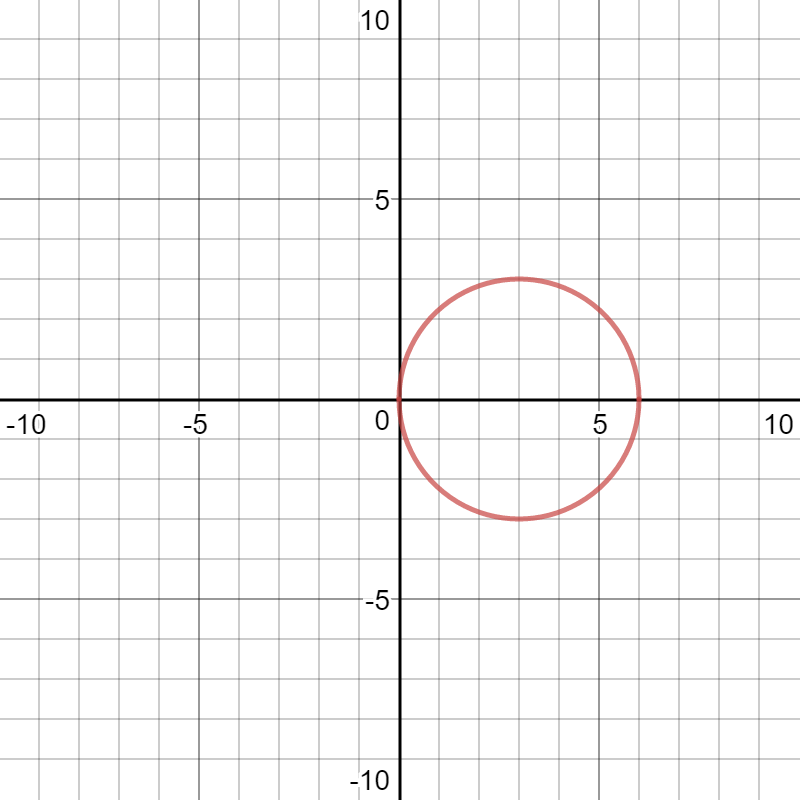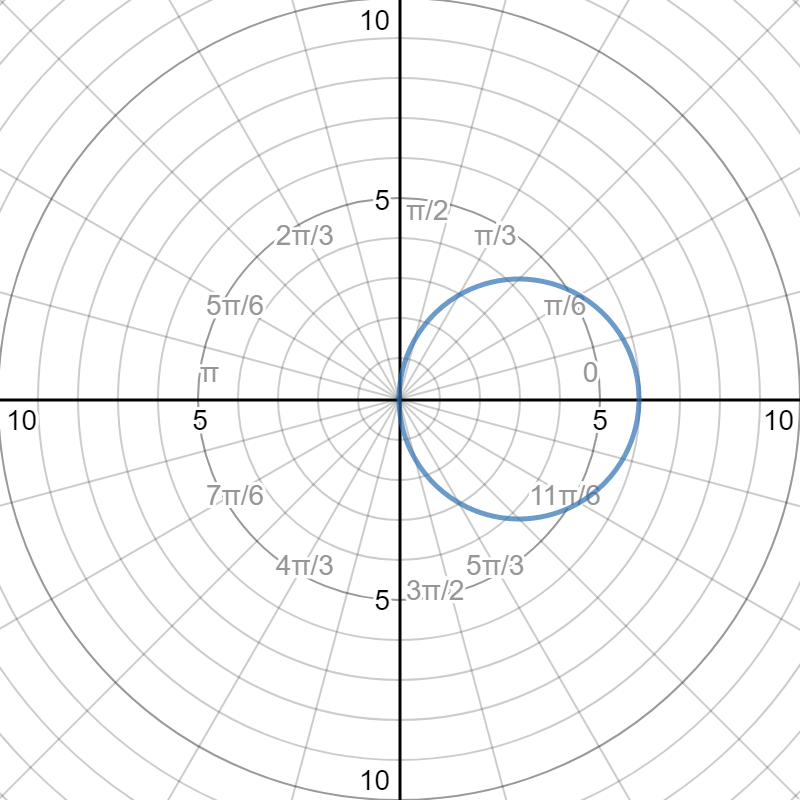How do you write the given equation #(x-3)^2+y^2=9# into polar form?
3 Answers
Explanation:
Rewrite the given equation as
This would make
Since
You substitude
Explanation:
Expand the square.
Use the conversion equations
Express r as a function of
Explanation:
Given:
Here is the graph of the original equation:

Expand the square:
Use the conversion equations
Begin the process of expressing
Combine like terms:
We can safely divide both sides by r, because we are only eliminating the trivial root
Add
Here is the graph in polar coordinates:

Please observe that the graphs are identical.
